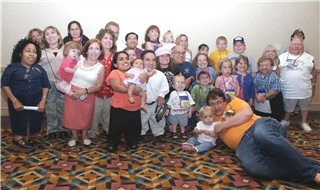Welcome to the updated KSG website!
This website was originally started in 1999 by a psychologist and a statistician. As the years have gone by and the world wide web has change, our website is changing, too!
The new website focuses on living with Kniest, SED and SMD: learning about the conditions, managing medical issues and advocacy work. We hope to bring new people of short stature and their families into the Little People of America community as well as help individuals get the medical care they need. We work with medical providers help them research these rare conditions and foster appropriate research. We also work to fight ablesim.
Disclaimer: the information on this website is for informational purposes only and no medical decisions should be based on its contents.
We hope you will find what you need on the Kniest SED Web Site. If not please contact us by emailing ksginfo{at}gmail.com. Any and all questions are welcomed!




